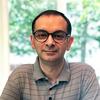computer scientist
Maxim Dounin
Maxim Dounin is a former principal software engineer at F5 and an Nginx core developer. He has quit the Nginx project, stating that he no longer sees it as "a free and open source project… for the public good." His fork, freenginx, is "going to be run by developers, and not corporate entities," writes Maxim Dounin, and will be "free from arbitrary corporate actions."
Dounin is one of the earliest and most active coders on the open source Nginx project and one of the first employees of Nginx, Inc., a company created in 2011 to commercially support the steadily growing web server.
Dounin opposed the assigning of published CVEs (Common Vulnerabilities and Exposures) to bugs in aspects of QUIC. While QUIC is not enabled in the most default Nginx setup, it is included in the application's "mainline" version, which, according to the Nginx documentation, contains "the latest features and bug fixes and is always up to date."
Chuck Moore
Charles Havice Moore II aka Chuck Moore is an American computer engineer and programmer, best known for inventing the Forth programming language in 1968. He cofounded FORTH, Inc., with Elizabeth Rather in 1971 and continued to evolve the language. Beginning in the early 1980s, Moore built a series of processors implementing Forth-like stack machines in hardware, including the Novix NC4000 and Sh-Boom. In the 2000s he designed a series of low-power chips containing up to 144 individual stack processors.
Jacob Ziv
Jacob Ziv (1931 – 25 March 2023) was an Israeli electrical engineer who, along with Abraham Lempel, developed the LZ family of lossless data compression algorithms.
Abraham Lempel
Abraham Lempel (February 1936 – February 2023) was an Israeli computer scientist and one of the fathers of the LZ family of lossless data compression algorithms.
The LZ77 and LZ78 algorithms authored by Lempel and Jacob Ziv have led to a number of derivative works, including the Lempel–Ziv–Welch algorithm, used in the GIF image format, and the Lempel-Ziv-Markov chain algorithm, used in the 7-Zip and xz compressors. The algorithms have also been used as originally published in formats such as DEFLATE, used in the PNG image format.
Mary Keller
Mary Kenneth Keller, B.V.M. (December 17, 1913 – January 10, 1985) was an American Catholic religious sister, educator and pioneer in computer science. She was the first person to earn a Ph.D. in computer science in the United States. Keller and Irving C. Tang were the first two recipients of computer science doctorates (Keller's Ph.D. and Tang's D.Sc. were awarded on the same day). She is part of the team that developed the BASIC programming language.
Jack Smith
Jack Smith is an American businessman who co-founded the first free web-based email service, Hotmail.com in 1996. Jack Smith worked at FirePower Systems Inc., a subsidiary of Canon Inc., where he designed integrated circuits for use in high performance PowerPC workstations, and invented and marketed the first web server accelerator card that boosted server performance significantly.
Niklaus Emil Wirth
Niklaus Emil Wirth (born 15 February 1934) is a Swiss computer scientist. He has pioneered several classic topics in software engineering.
Wirth was the chief designer of the programming languages Euler (1965), PL360 (1966), ALGOL W (1966), Pascal (1970), Modula (1975), Modula-2 (1978), Oberon (1987), Oberon-2 (1991), and Oberon-07 (2007). He was also a major part of the design and implementation team for the operating systems Medos-2 (1983, for the Lilith workstation), and Oberon (1987, for the Ceres workstation), and for the Lola (1995) digital hardware design and simulation system. In 1984, he received the Association for Computing Machinery (ACM) Turing Award for the development of these languages. In 1994, he was inducted as a Fellow of the ACM.
Gaurav Khanna
Gaurav Khanna is an Indian-American black hole physicist, supercomputing innovator, academic and researcher. He is the creator of the OpenMacGrid, PlayStation 3 Gravity Grid, and developer of open-source software for scientific computing for the Mac.
An astrophysicist and a supercomputer genius, Dr. Khanna used an extraordinary combination of science and software to research black holes. He networked 16 PlayStation 3 (PS3) consoles to help model black-hole collisions. Because black holes cannot be observed directly through telescopes, Dr. Khanna uses the supercomputer he built to create simulations of the collisions instead.
Shafi Goldwasser
Shafi Goldwasser is an Israeli-American computer scientist and winner of the Turing Award in 2012. She has made fundamental contributions to cryptography, computational complexity, computational number theory and probabilistic algorithms. Her career includes many landmark papers which have initiated entire subfields of computer science.
Sophie Wilson
Sophie Wilson is an English computer scientist, who helped design the BBC Micro and ARM architecture.
Wilson first designed a microcomputer during a break from studies at Selwyn College, Cambridge. She subsequently joined Acorn Computers and was instrumental in designing the BBC Micro, including the BBC BASIC programming language whose development she led for the next 15 years. She first began designing the ARM reduced instruction set computer (RISC) in 1983, which entered production two years later. It became popular in embedded systems and is now the most widely used processor architecture in smartphones.








